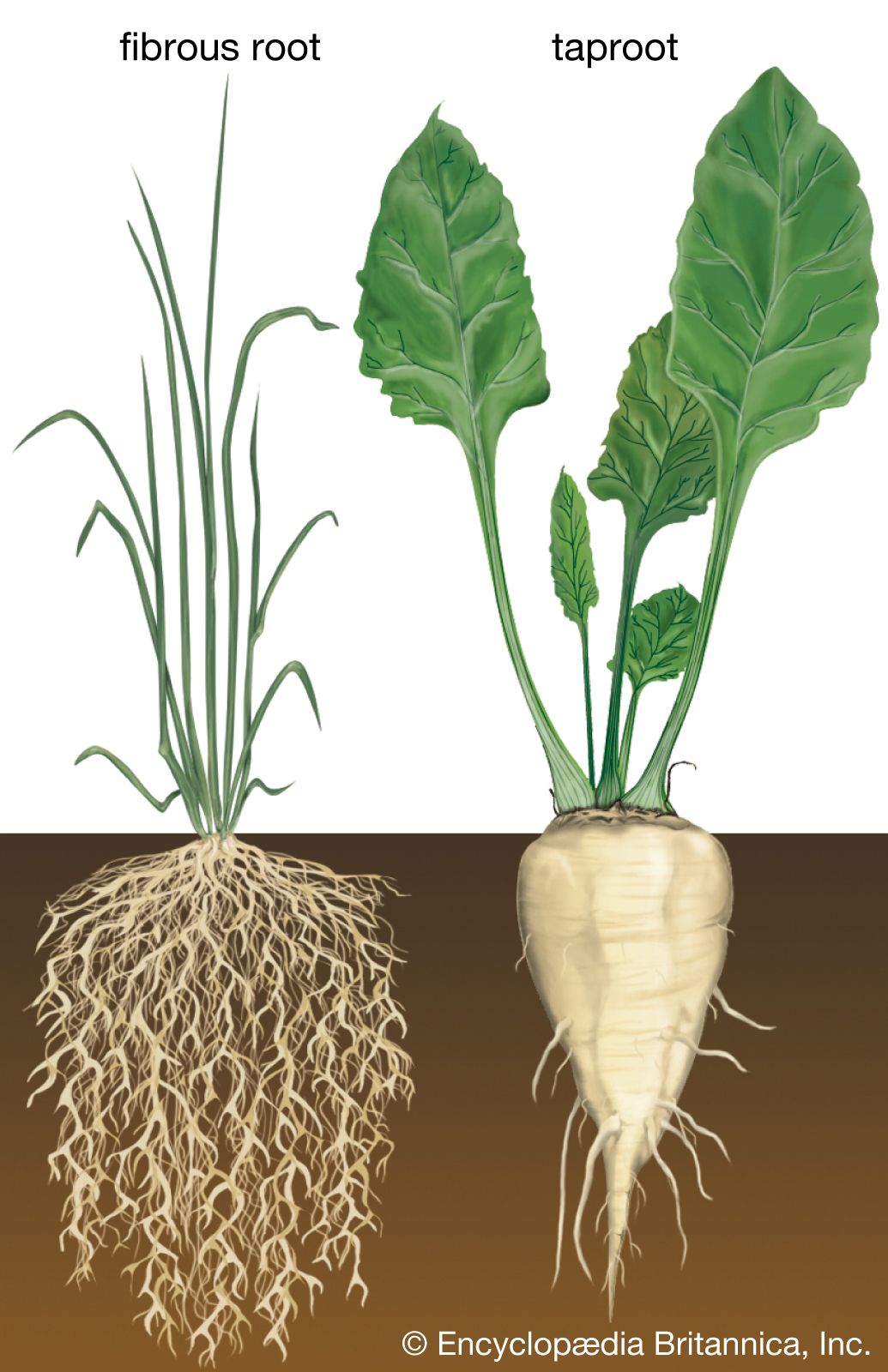
Root: Definition, Types, Examples, Morphology, and Functions

In botany, the root is a vital component of vascular plants, performing essential functions that contribute to the plant's overall health and stability. Strongly anchoring the plant to the soil, roots ensure that it remains upright and gains access to necessary resources. Furthermore, the root plays a critical role in the absorption of water and minerals from the soil, which are then conducted to the stem and other parts of the plant for growth and development. Understanding what is a root is fundamental for grasping various aspects of plant biology and ecology.
The complexity of root systems can vary significantly between different types of plants. As a result, you will find a wide range of root types and structures, each uniquely adapted to specific environmental conditions. From the shallow fibrous roots of grasses to the deep taproots of trees, these adaptations allow plants to thrive in diverse habitats. This article will explore the definition of roots, the various types and examples, their morphology, and their crucial functions in the plant's life cycle.
Definition of Roots
The root is primarily defined as the underground portion of a plant that serves fundamental roles in growth and stability. Unlike the above-ground segments of the plant, roots lack leaves and nodes, and they engage in no photosynthesis. Instead, their main functions include the anchorage of the plant into the soil, absorption of essential nutrients and water, and the storage of carbohydrates and other nutrients. Essentially, the root acts as a lifeline, providing the necessary support and sustenance required for the plant’s survival.
Key Characteristics of Roots
- Absorbent Surface: Roots are equipped with root hairs, which increase surface area, enhancing the plant's ability to take up water and nutrients.
- Structure: Roots are generally made up of different parts, including the root cap, meristematic region, and elongation zone, each playing a specific role in root development.
- Growth Patterns: Roots grow directionally downward in a process called geotropism, allowing plants to anchor effectively while seeking moisture and nutrients.
Types of Roots
Roots can be broadly categorized into various types based on their structure and function. Understanding these different types is essential for anyone studying plant biology, agriculture, or horticulture. The commonly recognized root types include:
1. Taproots
Taproots are characterized by a single, thick primary root that grows vertically downward, with smaller lateral roots branching off. Examples of plants with taproots include carrots and dandelions. These roots allow the plant to access deeper water sources and provide stability in varying soil conditions.
2. Fibrous Roots
In contrast to taproots, fibrous roots consist of numerous thin roots that spread horizontally close to the soil surface and lack a central root. Grasses typically exhibit this type of root system. Fibrous roots help prevent soil erosion and make efficient use of surface moisture.
3. Adventitious Roots
Adventitious roots arise from non-root tissues, such as stems or leaves. This adaptability allows plants to colonize new environments effectively. A well-known example includes the propagation of certain species of ivy and corn, where these roots help climb or stabilize the plant.
4. Aerial Roots
Aerial roots grow above the ground and can absorb moisture directly from the air. Many epiphytic plants, such as orchids, exhibit this type of root. Aerial roots play a critical role in nutrient acquisition and adapting to variable moisture conditions.
Examples of Roots
To further illustrate the diversity of roots, let's explore several notable examples:
- Carrot (Daucus carota): A classic example of a taproot, the carrot forms a thick, edible root that stores nutrients.
- Wheat (Triticum): An example of a fibrous root system, wheat's shallow roots spread out to maximize water absorption.
- English Ivy (Hedera helix): This climbing plant produces adventitious roots that help it cling to surfaces.
- Orchid (Orchidaceae): Known for its aerial roots, orchids can absorb moisture and nutrients from the environment around them.
Morphology of Roots
The morphology of roots refers to their structure, form, and arrangement, which can vary extensively among different plant species. A typical root structure comprises several key regions, each with distinct characteristics:
1. Root Cap
The root cap is a protective structure covering the tip of the root. It plays a vital role in helping the root navigate through the soil and protects the underlying meristematic tissues from damage. The root cap also secretes mucilage allowing for easier penetration into the soil.
2. Meristematic Zone
Situated just behind the root cap, the meristematic zone contains rapidly dividing cells. This area is crucial for the continuous growth of the root, contributing new cells that will differentiate into various root tissues.
3. Elongation Zone
Once cells have divided in the meristematic region, they move into the elongation zone, where they undergo significant growth and expansion. This region determines the root's overall length and allows it to penetrate deeper into the soil.
4. Maturation Zone
In the maturation zone, root cells begin to differentiate and develop specific functionalities, such as forming root hairs that enhance nutrient and water absorption. This zone is critical as it marks the transition from growth to efficiency in resource uptake.
Functions of Roots
The multifaceted functions of roots are crucial to a plant’s survival. Here are some of the primary roles they fulfill:
1. Anchorage
One of the foremost functions of roots is to anchor the plant securely within the soil. This stability allows plants to withstand various environmental conditions, including wind and rain, making them less prone to uprooting.
2. Absorption
Roots act as the primary interface for the uptake of water and essential minerals. The root hairs increase the surface area for absorption, facilitating efficient nutrient uptake critical for metabolic functions.
3. Storage
Many plants store carbohydrates, minerals, and other nutrients within their roots, serving as energy reserves for times of dormancy or adverse conditions. For example, beets and sweet potatoes are great examples of plants that utilize their roots for storage.
4. Transport
Roots also function as conduits, transporting absorbed water and nutrients through the vascular system of the plant. This transport is essential for the growth of shoots and leaves, enabling the plant to photosynthesize effectively.
Conclusion
Roots are indispensable parts of vascular plants that serve multiple functions essential for their growth and development. The various types of roots—tap, fibrous, adventitious, and aerial—underscore the adaptability of plants in different environments. Understanding the morphology and functions of roots provides valuable insight into plant biology and ecology. Whether one is exploring what is a root in a simple context or delving deeper into their complex roles, the significance of roots remains undeniable. By studying roots, we can better appreciate the intricate networks that sustain life on our planet.
Did you find this article helpful? Root: Definition, Types, Examples, Morphology, and Functions See more here Education.
Leave a Reply






Related posts